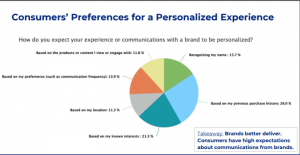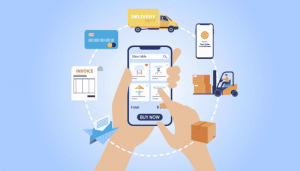Identifying customers who are “at-risk” to churn is challenging. The signs can be hard to identify and sometimes subtle. If you have a leaner customer success team, you recognize that you can’t spend equal time on every account.
A customer who is considering not renewing with you may be motivated by several different factors. They may be having a case of “buyer’s remorse,” or are unhappy with a customer support experience. Fortunately, once you’ve identified an at-risk customer, you can take positive steps to preserve that relationship.
Here are seven signs of at-risk customers, all of which likely exist the data you already have. On their own, these signs may not be a problem, but if you combine two or three signs together, it can be an indicator a customer may churn.
- Net Promoter Score (NPS) Survey Results
If you’re regularly surveying your customers, ideally, you’ll have the data you need to understand where they are. It’s obvious, but when a customer gives you a detractor (and even a neutral) NPS score, it’s time to step in.
If your customer doesn’t give you the reason for their low NPS survey score, look to your online community. Often, you may be able to piece together the backstory based on their community activity. You can come into the conversation more aware and prepared with more guidance.
- Online Community Activity
Not all customers are going to tell you directly that they’re dissatisfied, so look next to your online community, if you have one. Your online community is the customer success team’s personal crystal ball. Leverage your customers’ online behavior to proactively reach out to struggling and frustrated customers.
When a customer consistently posts upset or angry messages in your community, it’s a warning sign. Of course, if it’s a one-off post or once every three months or so, paired with positive posts, you don’t have to worry as much, but watch for trends by certain customers.
If you notice customers asking basic product questions long after they should be, it’s a sign that they won’t or haven’t fully adopted your product. This is your chance to invest extra resources into education and training for these accounts. If you don’t, it might mean they go elsewhere where the product is easier to use and training is more available.
Keep in mind that the interaction that you don’t have is just as important as the interaction you do have. If your customers are nowhere to be seen, that’s a clear warning sign. If they have consistent engagement, and then it drops for a while, that’s an indicator of an at-risk customer who is losing interest.
- Support Ticket Data
The support ticket question is a Goldilocks problem – you don’t want too many, you don’t want too few, you want the number to be just right.
Not having many support tickets might sound like a good thing, but it can suggest that your customer is unengaged and has not fully adopted your product. You could assume they’re a product genius who never needs help, but it’s more likely they haven’t invested in the product and aren’t taking the time to figure it out. Your product might be on the budget chopping block next year.
Having a high number of support tickets is more of an obvious sign of an at-risk customer. If they submit ticket after ticket, it may show they’re unhappy, experiencing a lot of product bugs, or they’re experiencing a high effort learning how to use your product. This is a good chance to escalate these tickets to get them resolved as soon as you can, but both of these churn warnings are opportunities for you to step in to offer additional education and training.
- Negative Reviews and Direct Complaints
Direct feedback, including negative reviews and social media complaints, is one of the best indicators of your customers’ risk status. It’s clear that these customers have a problem with your product, service, or organization, and just because they didn’t explicitly mention leaving doesn’t mean they aren’t thinking about it.
It’s essential to reach out to these customers because their issues don’t usually resolve themselves on their own – and they’re actively bringing your product’s reputation down, so try to stop the cause of the problem as soon as possible.
- Conversations about Contract Modification
When customers start asking for discounts or deals or a modification of their contract, it’s an indication of a few possible things, many of which are risks for churn. Your customer might be happy, but they might have to prove to leadership that your product is needed in the budget, or they need to justify keeping your product because one of your competitors offers a similar solution for less. If it’s right before renewal, and they’re asking you about modifying the contract, this is a definite indicator they’re thinking about other providers.
Use this signal as a sign to step in and learn why they’re asking about a contract modification. They may not have realized all the value your product has to offer, and it’s a good chance for you to remind them of your strategic differentiators.
- Website Activity
If you have a tool like web tracking, you may be able to see when customers view cancellation or downgrade pages – a clear sign they’re interested in moving on from your product.
Additionally, if customers ask you how to download their data from their product, it may be a sign they’re looking to migrate their product. Even if your customers don’t take any action to change their account status, this is still a major indicator that something is wrong.
Reach out to these customers to find out what the underlying problem is. Do they still see the value in your product or service? Are they dissatisfied with your support team? Once you’ve identified the base issue, take steps to resolve your customer’s issue, if possible.
- Organizational Changes at the Account
You’re scrolling through LinkedIn, when you see your main point of contact at an account has left the company or gotten a new title. Or maybe, you’re watching the news and you see your account just hired a new CEO. Uh oh.
These kinds of organizational change can spell bad news. Why? When your main point of contact leaves, you’re potentially losing your internal champion. In this case, try to reach out as soon as you can to discuss a transition plan and focus on helping the new point of contact get up to speed, with as much help as you can give.
If it’s a leadership change, you can assume they’ll be reviewing the tech stack. Again, it’s your chance to jump in and educate your customer about the value you offer and the resources you provide.
See At-Risk Customers as An Opportunity
It takes time and the right data to develop your customer success spidey-senses.
Gaining a deep understanding of your data is key to helping you prioritize your time and customer list – and to uncovering larger problems across your customer-base. When you reach out, think of these customers, complaints, or reviews in a positive way. Look at them as opportunities to identify weak spots in your product or across your business, so that you can continue to improve customer retention and experience.
A version of this post previously appeared here.
Digital & Social Articles on Business 2 Community
(61)







